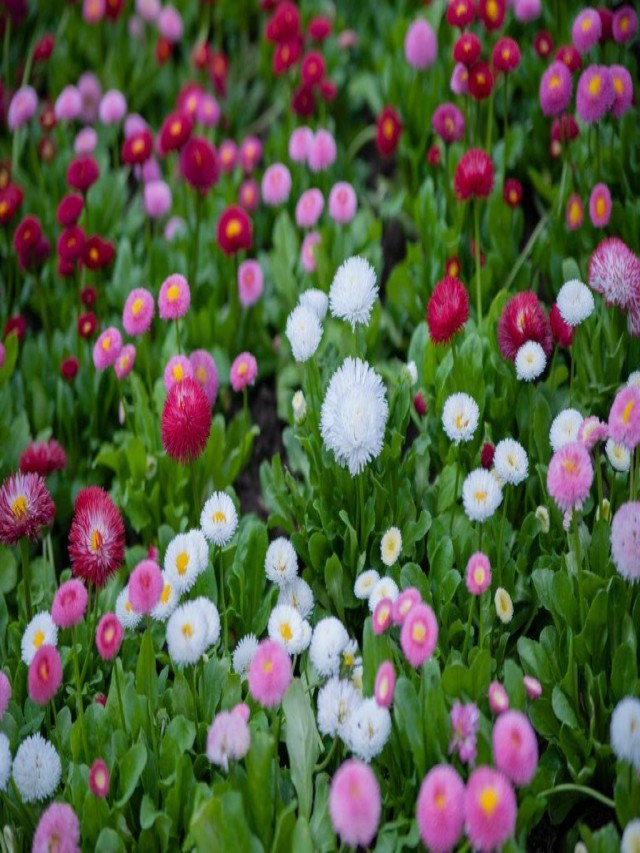Bellis perennis, also known as daisies, are stunning flowers that can brighten up any garden. Whether planted in beds, flower pots, or balcony boxes, their vibrant colors and unique shapes make them a delightful addition to any outdoor space. In this article, we will explore the origin and characteristics of Bellis perennis, discover some of the most beautiful varieties, learn how to plant and care for them, and address common questions about their hardiness and toxicity.
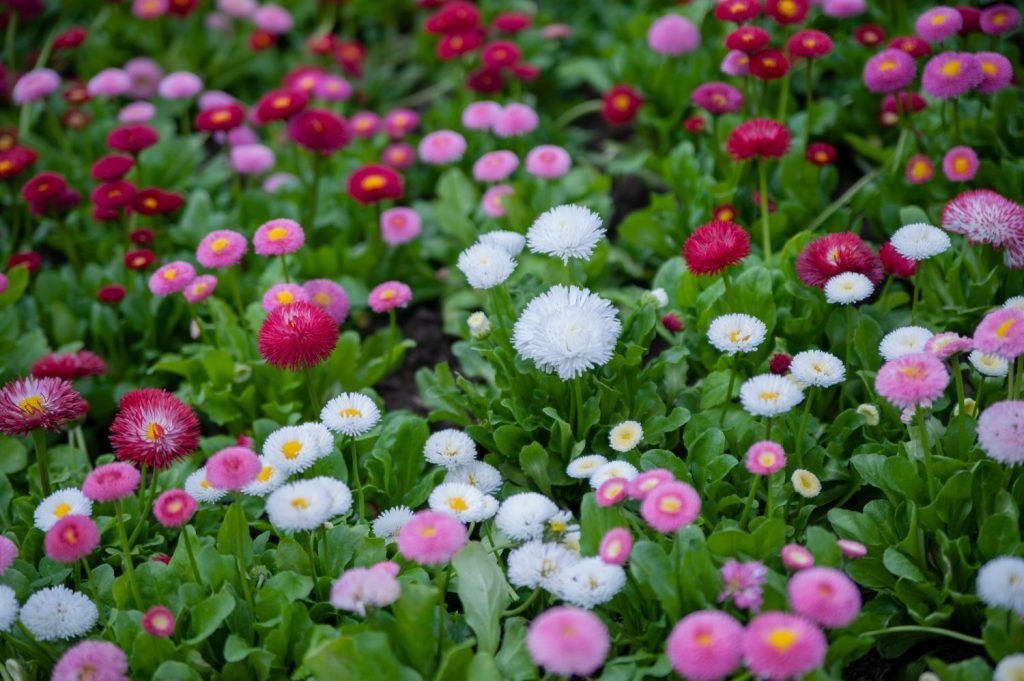
Daisies add a pop of color to the spring garden
Bellis perennis: Origin and Characteristics
Daisies, scientifically known as Bellis perennis, belong to the daisy family. These plants are native to Europe and thrive in meadows and pastures with nutrient-rich, well-drained, moist, loamy soils. While cultivated Bellis perennis varieties differ from the wild form, they all feature composite flowers with yellow tubular flowers in the center and white, pink, red, purple, or variegated ray florets around the outside. In the first year, the plant forms dark green leaf rosettes, followed by flowering in the second year. Bees and flies are the main pollinators of Bellis perennis.
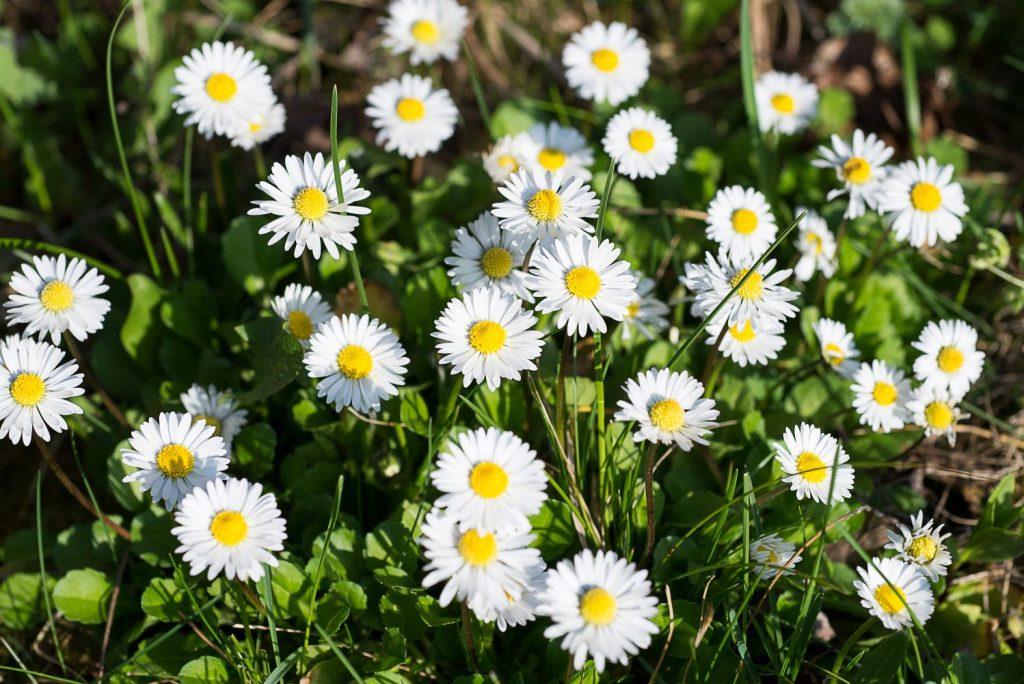
Daisies have many close plant relatives
Tip: Bellis perennis goes by various names, such as daisies, English daisies, and marguerite. The name “daisy” is believed to come from “day’s eye,” as the flowers close at night and open in the morning.
Bellis perennis: Beautiful Planting Partners
Bellis perennis can be paired with other spring-flowering plants like daffodils, wild pansies, horned violets, primulas, and tulips to create a vibrant spring garden.
The Most Beautiful Bellis Varieties
There is a wide range of Bellis perennis varieties to choose from. Here are some popular options:
- ‘Alba Plena’: Features white, double flowers.
- ‘Enorma’: Has extremely long stems.
- ‘Floro Pleno’: Displays densely double, red flowers.
- ‘Habanera’: Showcases filigree, large, double flowers with pink tips.
- ‘Kito’: Boasts cherry pink flowers.
- ‘Pomponette’: Contains densely double, small flowers in white, pink, or red.
- ‘Radar’: Presents white, large flowers.
- ‘Robella’: Exhibits densely double, salmon pink flowers.
- ‘Rob Roy’: Features double, red flowers.
Planting Bellis perennis: When and Where?
Bellis perennis thrives in warm, sunny, or semi-shady positions. However, they are not tolerant of high summer heat. The soil should be loamy, humus-rich, fresh, and well-drained. Before planting Bellis, enrich the garden soil with compost. For pot culture, opt for a potting soil like Plantura Organic Flower Compost.
To plant Bellis perennis:
- Sow seeds outdoors between June and July for outdoor cultivation, or in August for greenhouse cultivation.
- Use 1g of seeds per square meter.
- Bellis perennis is a light germinator, so do not cover the seeds with soil.
- Keep the seeds slightly moist during germination, which takes about 1 to 2 weeks at an optimal temperature of 18°C.
- After germination, separate the plantlets into small clumps spaced 10cm apart.
- In September, transplant the plants to their final location, maintaining a planting distance of 20cm.
- Bellis perennis only flowers in the second year. To enjoy their flowering every year, they need to be resown annually.
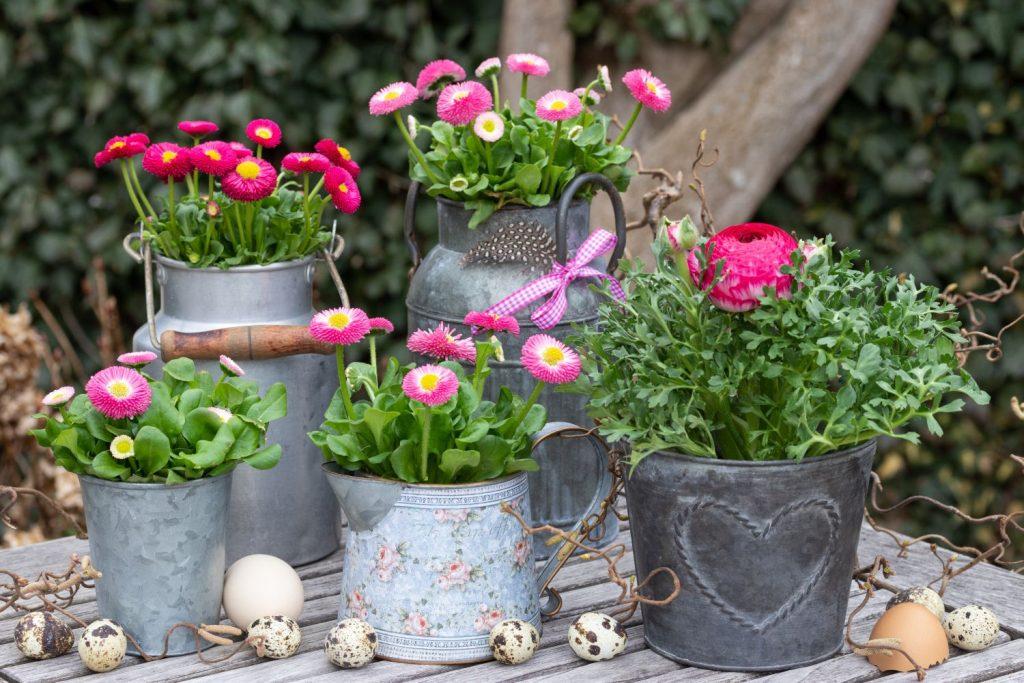
Daisies look beautiful in pots as table decorations
Tip: Bellis perennis can also be purchased as pre-grown plants from garden shops or supermarkets. These plants should be planted in spring but require extra protection due to their sensitivity to cool temperatures.
Bellis Care Tips
With proper care, Bellis perennis can provide a lush sea of flowers in the spring. Here are some essential care tips:
Watering and Fertilizing Bellis
- Regularly water Bellis perennis to ensure they don’t dry out. It’s best to water them in small amounts more frequently.
- Once the new growth phase begins in spring, fertilize Bellis perennis with an organic liquid fertilizer like Plantura Liquid Flower Food. Apply the fertilizer every 2 to 3 weeks for abundant flowering, but stop fertilizing in winter.
Pruning Bellis perennis
- Prune Bellis perennis after flowering to prolong the flowering period and control self-seeding. Remove the stems with faded flowers.
Diseases and Pests
- Bellis perennis can be susceptible to mildew, grey mold, root rot, and aphids. Act quickly if you notice any signs of these diseases and pests. Dispose of infested plant parts and treat the affected areas accordingly.
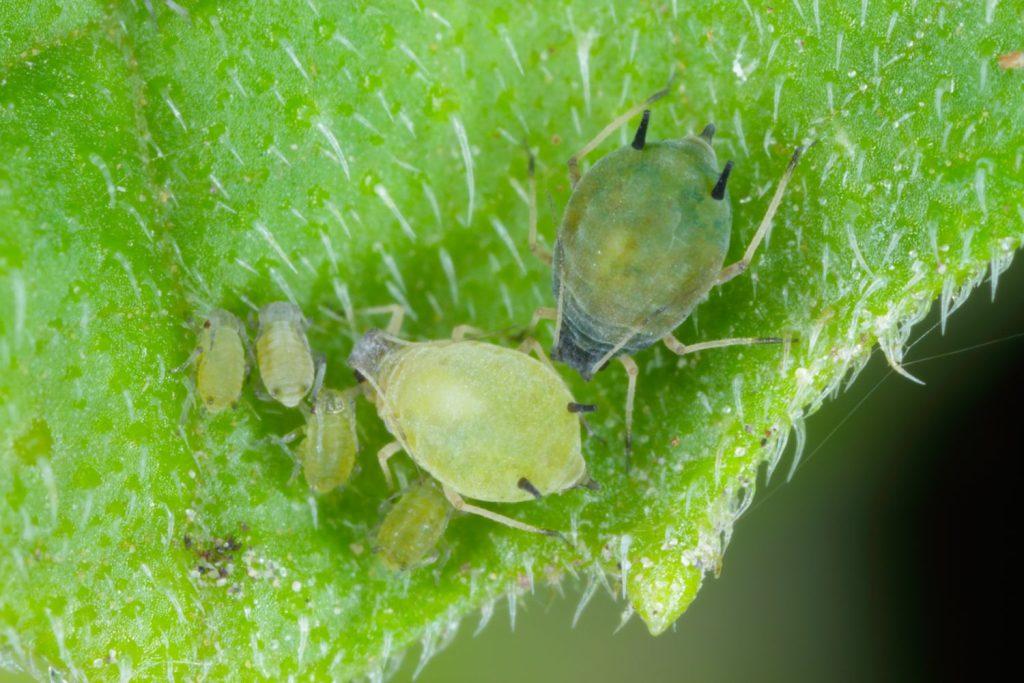
Daisies can become infested by aphids
Bellis Hang Their Heads: What Can Be Done?
If your Bellis perennis plants start drooping, they may be lacking water. Thoroughly water them or place the flowers in a water bath temporarily to revive them. Another cause of drooping can be root rot, which occurs when the roots are subjected to waterlogged conditions. Check the moisture of the soil and adjust your watering schedule or planting container if necessary.
Are Bellis Hardy?
Bellis perennis is only partially hardy and requires protection from severe frost during winter. For outdoor plants, cover them with coniferous brushwood or straw. For potted plants, wrap the planter with a jute bag or bubble wrap to prevent the root ball from freezing. Place the pot in a sheltered and dry location. Bellis perennis can withstand temperatures as low as -15°C with dry air. However, they are not long-lived plants and typically require reseeding each year for consistent flowering.
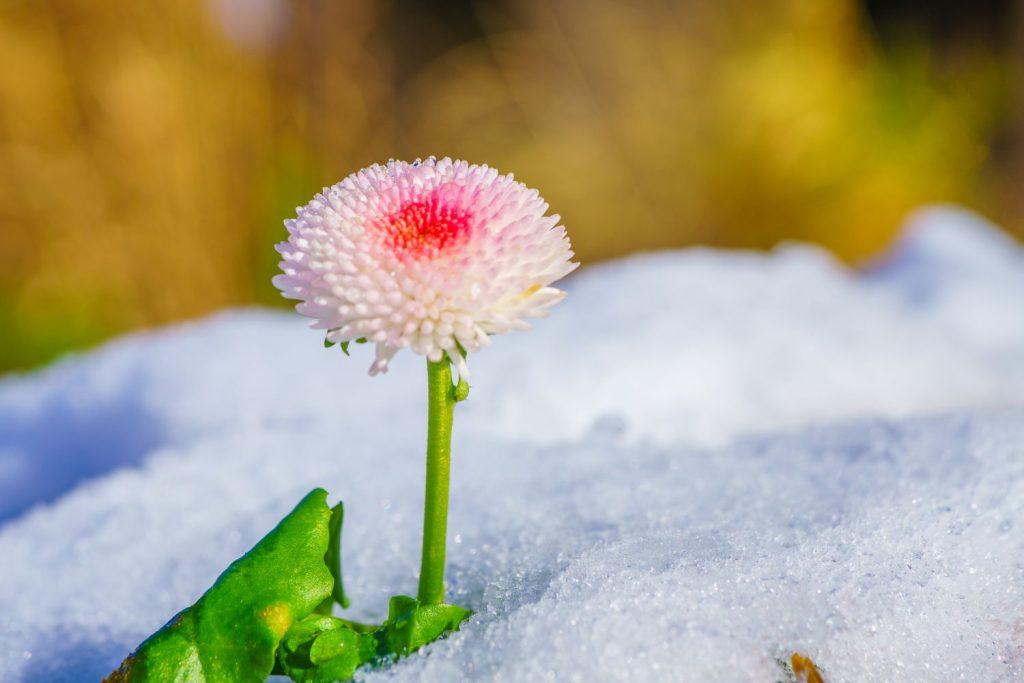
Daisies are quite winter-hardy
Propagation
Bellis perennis can be propagated through division or sowing. Division is best done after flowering. Carefully dig up the plant and divide it into individual rosettes before planting them in desired locations.
Alternatively, if seeds are available (double-flowering varieties do not produce seeds), you can sow them directly in the open from May to June. Sow the seeds in rows, as Bellis perennis is a light germinator. Keep the seeds slightly moist during germination. Once the plants are large enough, separate them into small clumps with a distance of 10cm between each. In September, transplant the flowers to their final location.
Tip: Propagated Bellis perennis will only flower the following year, as they are biennials. If you want them to flower in the same year, start the seeds indoors in February, although the flowering may be less abundant.

Plant daisies in their intended location in September
Are Bellis perennis Poisonous?
Bellis perennis is slightly poisonous. While small quantities of the stalk and flowers are harmless, consuming larger quantities can lead to symptoms of poisoning. The flowers contain flavone and cosmosiin, while the stem and leaves contain saponins. If someone experiences symptoms such as nausea, vomiting, diarrhea, or seizures after consuming Bellis perennis, seek medical attention and ensure they drink plenty of tea and water. Charcoal can also help counteract the poisoning.
In addition to Bellis perennis, asters are popular plants that can add vibrant colors to your garden throughout the growing season.
With the right planting, care, and attention, Bellis perennis can bring beauty and charm to your garden. Enjoy the colorful display and the joy these lovely flowers bring to your outdoor space!

